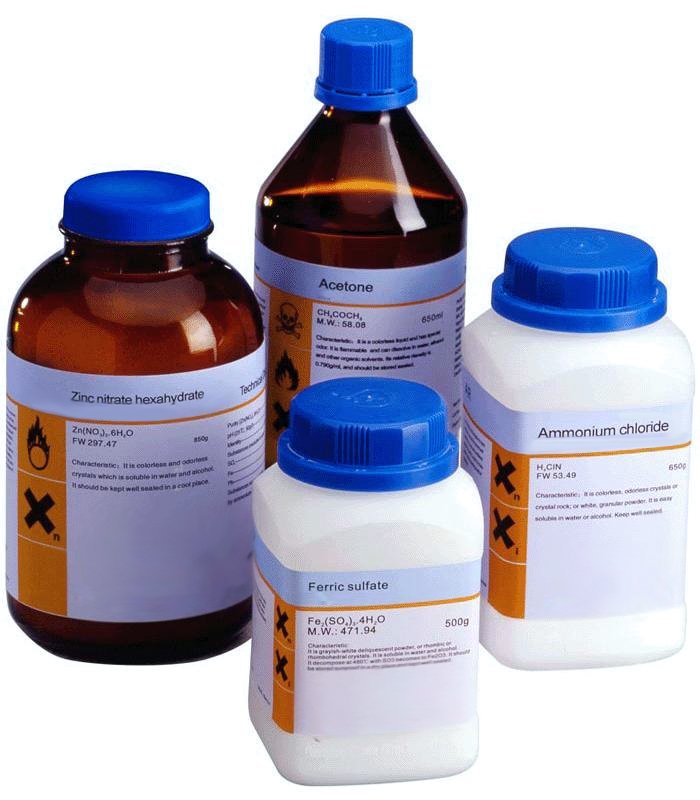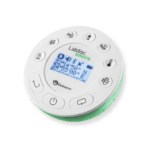Magnesium Sulphate Heptahydrate 1kg FCC
€17,00 incl. VAT
Magnesium Sulfate 1Kg
Magnesium sulfate, Epsom salt (heptahydrate), English salt, Bitter salts, Bath salts
Chemical Formula: MgSO₄·7H₂O
Molecular Weight: 246.47 g/mol
CAS Number: 10034-99-8
EC Number: 231-298-2
Grade: FCC (Food Chemicals Codex)
Appearance: White or colorless crystalline granules
Odor: Odorless
Solubility: Fully soluble in water
https://pubchem.ncbi.nlm.nih.gov/compound/Magnesium-sulfate
Magnesium Sulphate Heptahydrate 1kg FCC
Magnesium sulfate or magnesium sulphate (in English-speaking countries other than the US) is a chemical compound, a salt with the formula MgSO4, consisting of magnesium cations Mg2+ (20.19% by mass) and sulfate anions SO2−4. It is a white crystalline solid, soluble in water but not in ethanol.
Magnesium sulfate is usually encountered in the form of a hydrate MgSO4·nH2O, for various values of n between 1 and 11. The most common is the heptahydrate MgSO4·7H2O, known as Epsom salt, which is a household chemical with many traditional uses, including bath salts.
The main use of magnesium sulfate is in agriculture, to correct soils deficient in magnesium (an essential plant nutrient because of the role of magnesium in chlorophyll and photosynthesis). The monohydrate is favored for this use; by the mid 1970s, its production was 2.3 million tons per year. The anhydrous form and several hydrates occur in nature as minerals, and the salt is a significant component of the water from some springs.
As an FCC-grade material, it meets food safety standards and is suitable for human consumption or topical use.
-
Product Name: Magnesium Sulfate Heptahydrate
-
Chemical Formula: MgSO₄·7H₂O
-
Molecular Weight: 246.47 g/mol
-
CAS Number: 10034-99-8
-
EC Number: 231-298-2
-
Grade: FCC (Food Chemicals Codex)
-
Appearance: White or colorless crystalline granules
-
Odor: Odorless
-
Solubility: Fully soluble in water
Natural occurrence
As Mg2+ and SO2−4 ions are respectively the second cation and the second anion present in seawater after Na+ and Cl−, magnesium sulfates are common minerals in geological environments. Their occurrence is mostly connected with supergene processes. Some of them are also important constituents of evaporitic potassium-magnesium (K-Mg) salts deposits.
Bright spots observed by the Dawn Spacecraft in Occator Crater on the dwarf planet Ceres are most consistent with reflected light from magnesium sulfate hexahydrate.
Almost all known mineralogical forms of MgSO4 are hydrates. Epsomite is the natural analogue of “Epsom salt”. Meridianiite, MgSO4·11H2O, has been observed on the surface of frozen lakes and is thought to also occur on Mars. Hexahydrite is the next lower hydrate. Three next lower hydrates – pentahydrite, starkeyite, and especially sanderite – are rare. Kieserite is a monohydrate and is common among evaporitic deposits. Anhydrous magnesium sulfate was reported from some burning coal dumps.
Preparation
Magnesium sulfate is usually obtained directly from dry lake beds and other natural sources. It can also be prepared by reacting magnesite (magnesium carbonate, MgCO
3) or magnesia (oxide, MgO) with sulfuric acid (H2SO4).
Another possible method is to treat seawater or magnesium-containing industrial wastes so as to precipitate magnesium hydroxide and react the precipitate with sulfuric acid.
Also, magnesium sulfate heptahydrate (epsomite, MgSO4·7H2O) is manufactured by dissolution of magnesium sulfate monohydrate (kieserite, MgSO4·H2O) in water and subsequent crystallization of the heptahydrate.
Physical properties
Magnesium sulfate relaxation is the primary mechanism that causes the absorption of sound in seawater at frequencies above 10 kHz[11] (acoustic energy is converted to thermal energy). Lower frequencies are less absorbed by the salt, so that low frequency sound travels farther in the ocean. Boric acid and magnesium carbonate also contribute to absorption.
Uses
Medical
Magnesium sulfate is used both externally (as Epsom salt) and internally.
The main external use is the formulation as bath salts, especially for foot baths to soothe sore feet. Such baths have been claimed to also soothe and hasten recovery from muscle pain, soreness, or injury. Potential health effects of magnesium sulfate are reflected in medical studies on the impact of magnesium on resistant depression and as an analgesic for migraine and chronic pain. Magnesium sulfate has been studied in the treatment of asthma, preeclampsia and eclampsia.
Magnesium sulfate is the usual component of the concentrated salt solution used in isolation tanks to increase its specific gravity to approximately 1.25–1.26. This high density allows an individual to float effortlessly on the surface of water in the closed tank, eliminating as many of the external senses as possible.
In the UK, a medication containing magnesium sulfate and phenol, called “drawing paste”, is useful for small boils or localized infections and removing splinters.
Internally, magnesium sulfate may be administered by oral, respiratory, or intravenous routes. Internal uses include replacement therapy for magnesium deficiency, treatment of acute and severe arrhythmias, as a bronchodilator in the treatment of asthma, preventing eclampsia, a tocolytic agent, and as an anticonvulsant.
It is also may be used as laxative.
Agriculture
In agriculture, magnesium sulfate is used to increase magnesium or sulfur content in soil. It is most commonly applied to potted plants, or to magnesium-hungry crops such as potatoes, tomatoes, carrots, peppers, lemons, and roses. The advantage of magnesium sulfate over other magnesium soil amendments (such as dolomitic lime) is its high solubility, which also allows the option of foliar feeding. Solutions of magnesium sulfate are also nearly pH neutral, compared with the slightly alkaline salts of magnesium as found in limestone; therefore, the use of magnesium sulfate as a magnesium source for soil does not significantly change the soil pH. Contrary to the popular belief that magnesium sulfate is able to control pests and slugs, helps seeds germination, produce more flowers, improve nutrient uptake, and is environmentally friendly, it does none of the purported claims except for correcting magnesium deficiency in soils. Magnesium sulfate can even pollute water if used in excessive amounts.
Magnesium sulfate was historically used as a treatment for lead poisoning prior to the development of chelation therapy, as it was hoped that any lead ingested would be precipitated out by the magnesium sulfate and subsequently purged from the digestive system. This application saw particularly widespread use among veterinarians during the early-to-mid 20th century; Epsom salt was already available on many farms for agricultural use, and it was often prescribed in the treatment of farm animals that inadvertently ingested lead.
Food preparation
Magnesium sulfate is used as
- Brewing salt in making beer.
- coagulant for making tofu.
- Salt substitute.
Chemistry
Anhydrous magnesium sulfate is commonly used as a desiccant in organic synthesis owing to its affinity for water and compatibility with most organic compounds. During work-up, an organic phase is treated with anhydrous magnesium sulfate. The hydrated solid is then removed by filtration, decantation, or by distillation (if the boiling point is low enough). Other inorganic sulfate salts such as sodium sulfate and calcium sulfate may be used in the same way.
Applications:
-
Dietary Supplements:
Used as a magnesium source in capsules, powders, and beverages to support muscle and nerve function. -
Food Industry:
Functions as a stabilizer, acidity regulator, and magnesium fortifier in various food products. -
Cosmetics & Personal Care:
Popular in detoxifying bath soaks, exfoliating body scrubs, and skincare treatments. -
Agriculture & Gardening:
Can be used to correct magnesium deficiency in soil (requires appropriate technical grade for agricultural use).
Packaging:
Supplied in a resealable 1kg plastic box for convenient use and long-term storage.
Storage Instructions:
Store in a cool, dry place. Keep sealed to prevent clumping and moisture absorption.
Safety & Handling:
Food-grade and safe when used as directed. Avoid contact with eyes and inhalation of dust. Keep out of reach of children.
Related products
Ammonium Sulfate 98% (1Kg)
Aluminium Sulfate 98% 1kg
Manganese Sulfate (250gr)
Magnesium Sulfate 1Kg
Iron (II) Sulfate 500gr
|
|
Chemical formula |
FeSO4 |
| Molar mass | 278.02 g/mol (heptahydrate) |
| Odor | Odorless |
| Density | 1.895 g/cm3 (heptahydrate) |
| Melting point | 60–64 °C (140–147 °F; 333–337 K) (heptahydrate) |
| Solubility in water | 15.65 g/100 mL (0 °C) 20.5 g/100 mL (10 °C) 29.51 g/100 mL (25 °C) 39.89 g/100 mL (40.1 °C) 51.35 g/100 mL (54 °C) |




 Labdisc
Labdisc Botzees
Botzees Edison
Edison Telepresence Robot
Telepresence Robot DOBOT
DOBOT Keyestudio
Keyestudio Fischertechnik
Fischertechnik